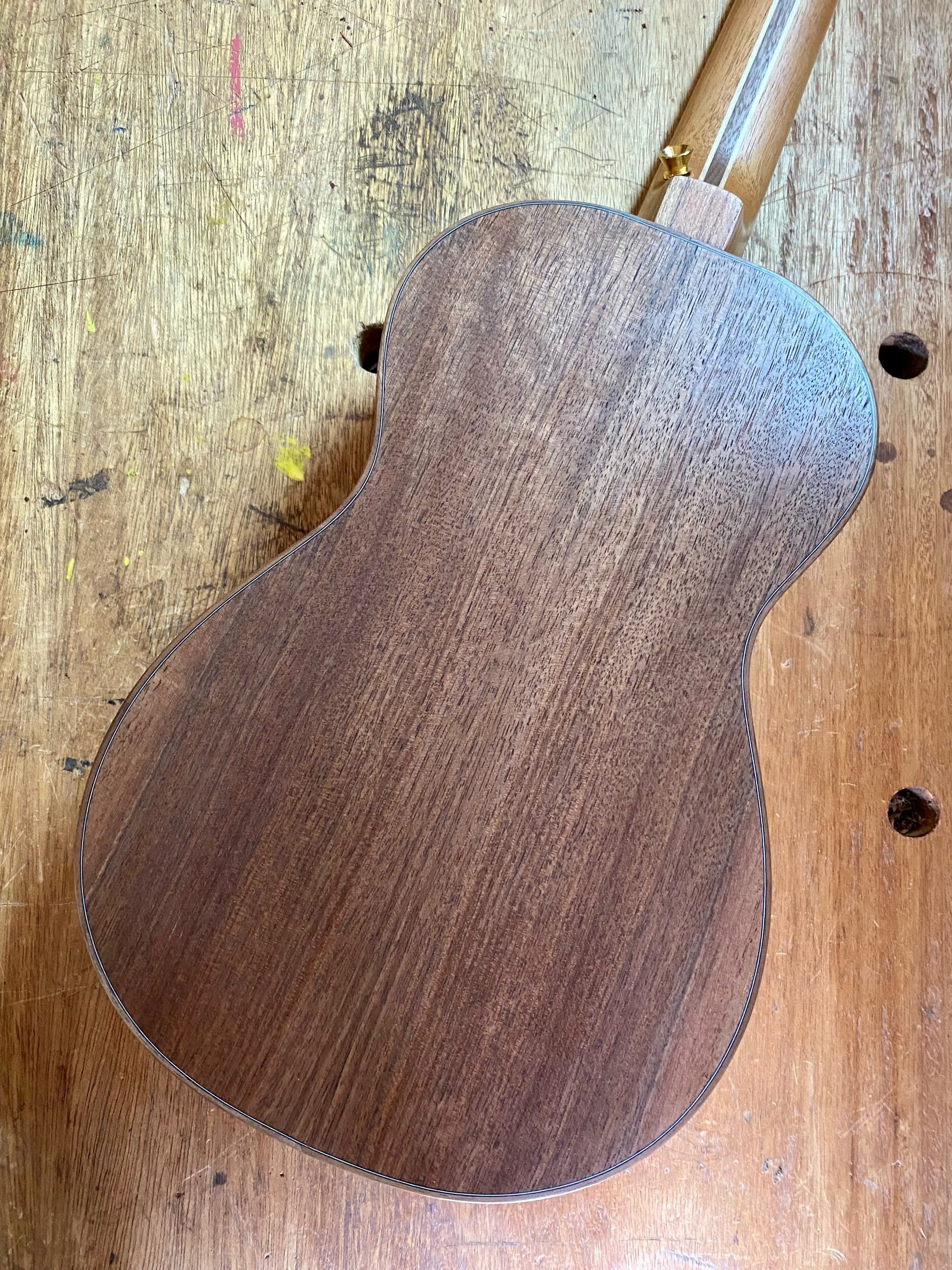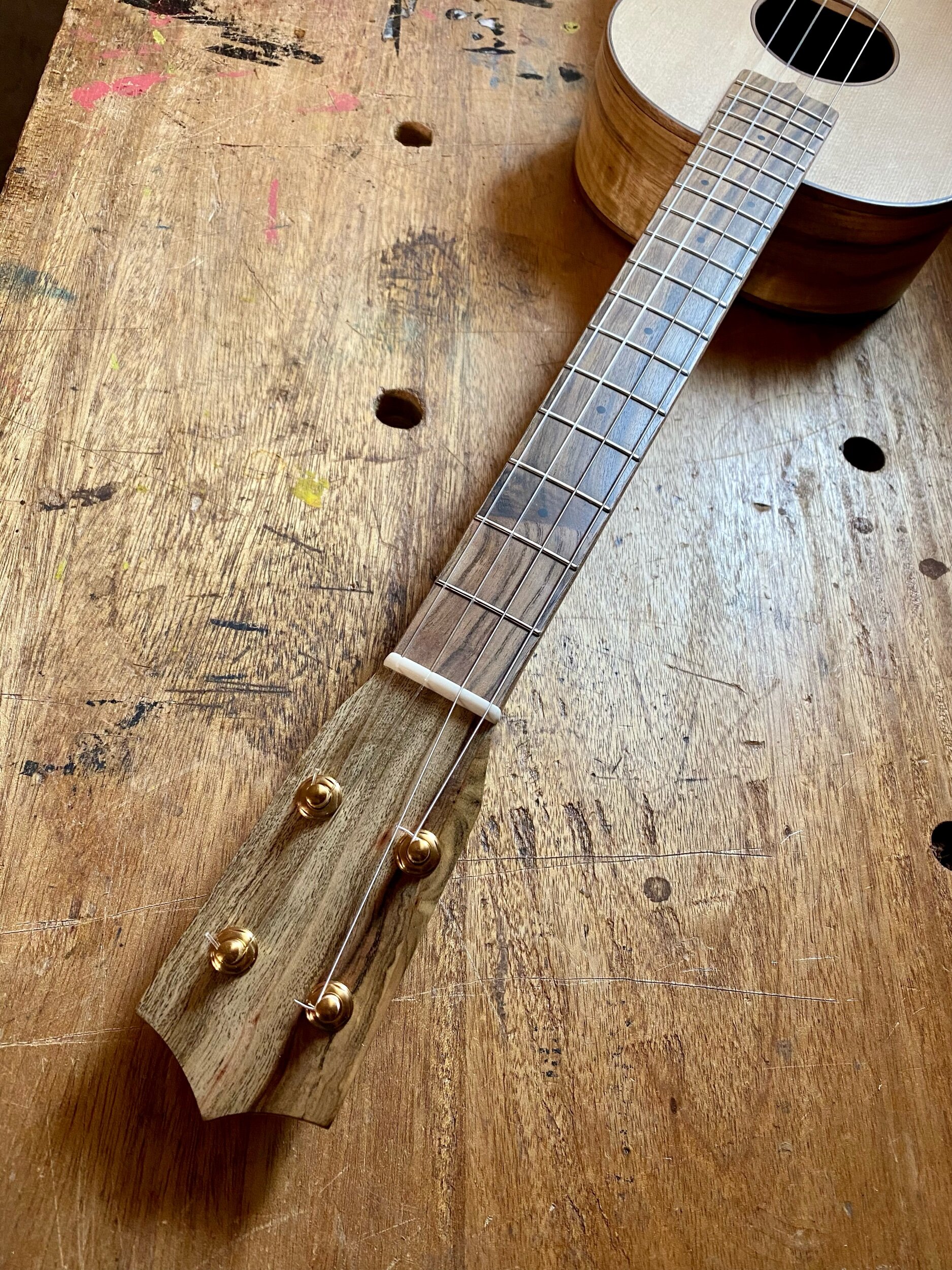This is a really special ukulele, made from some really special pieces of wood. All of these pieces needed a bit of persuasion to do their part in the process, as they all were grafted, marked, scarred or otherwise special. Salvaged Bearclaw Sitka Spruce from Alaska, grafted Walnut and grafted Pistachio from California Orchards and Douglas Fir salvaged from a floor joist.
“Aaron,
...I am in LOVE with #629. It sounds a great as it looks. The sound your instruments produce is exactly what I want. Thank you for creating such a special piece for me.
Thanks so much!
- D. C. ”


































































































































